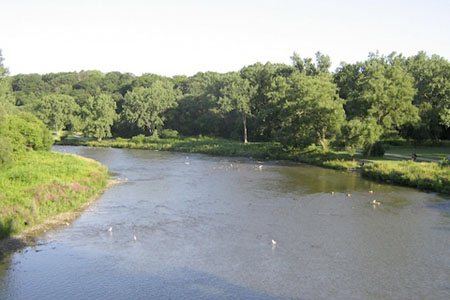This article is from our Toronto Feature series. Features from past programs are not updated.
This content is from a series created in partnership with Museum Services of the City of Toronto and Heritage Toronto. We gratefully acknowledge funding from the Ontario Ministry of Tourism, Culture and Sport, and the Department of Canadian Heritage.
"Before Yonge Street There Was Carrying Place Trail"
The Toronto site, with its lake harbour and access to passages inland from a low, flat lakeside, had vital geographic advantages for its inhabitants. The First Nations could make their way north by canoe by several rivers from the lakeshore. The primary route ran up the valley of the Humber River, across to the Holland River, into Lake Simcoe, and from there by water links to Georgian Bay.
This route followed a long portage along the swampy and wooded banks of the Humber River, apparently because that waterway was much impeded by timber and beaver dams. This Carrying Place Trail, or Toronto Passage, was thus arduous; still it cut hundreds of kilometres off the longer route to the upper Great Lakes.
Carrying Place Trail was an important trade route for the First Nations and later the French. Étienne Brûlé probably travelled it in 1615 and the Iroquois used it on their way to attack Huronia in 1649. Ancestors of today's Huron-Wendat, Six Nations of the Grand River, and Mississauga of the New Credit First Nation successively established communities along the Humber path. French trading posts at the mouth of the Humber River followed, the first being built in 1720. Although of lesser importance to the British, the route still contributed to the decision to establish the settlement of York here in 1793.
After Yonge Street was constructed in 1796, the Humber River declined as a major route inland. While much of this ancient trail has been lost to modern development, it can still be traced along city streets and country paths that follow portions of its route. Large oak trees, remnants from the time of Carrying Place, still stand along the trail. One hundred and fifty of these trees were inventoried and proclaimed as the "Tuhbenahneequay Ancient Grove," named for the daughter of a chief of the Mississauga.

 Share on Facebook
Share on Facebook Share on X
Share on X Share by Email
Share by Email Share on Google Classroom
Share on Google Classroom





